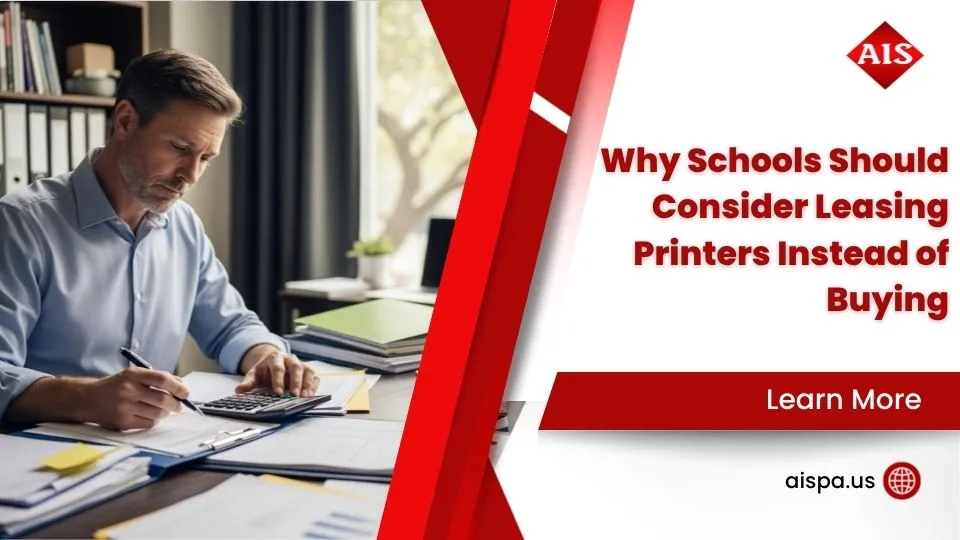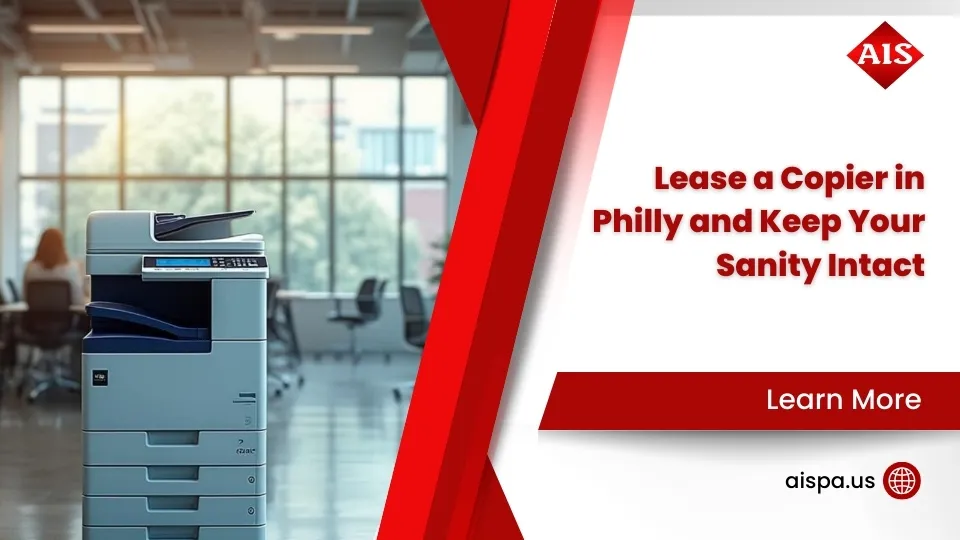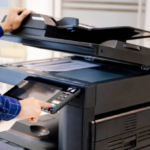How to Choose the Right Copier Lease Plan for Your Business
Copier Lease Plan for Your Business
Choosing the right copier lease plan is crucial for any business aiming to manage costs effectively while maintaining high productivity. Copier leasing offers flexibility, access to the latest technology, and various financial benefits. In this guide, we will delve into everything you need to know about copier leases, including the key terms and factors to consider.
Understanding Copier Leases
Definition of a Copier Lease

A copier lease is a contractual agreement between a business and a leasing company that allows the business to use a copier for a specified period in exchange for regular lease payments. This arrangement provides businesses access to necessary office equipment without the significant upfront costs associated with purchasing.
Components of a Copier Lease
- Lease Agreement: A formal contract detailing the terms and conditions of the lease, including payment schedules, duration, maintenance responsibilities, and end-of-lease options.
- Lease Term: The length of time the lease agreement is in effect, typically ranging from 12 to 60 months.
- Monthly Payments: Regular payments made by the lessee to the lessor for the duration of the lease term.
- Maintenance and Service: Agreements that may be included in the lease to cover repair and maintenance services.
Basic Copier Lease Agreement Terms
- Upfront Costs: Initial payments required to commence the lease, which may include a security deposit or first and last month’s payments.
- Lease Rate: The cost associated with leasing the copier, often influenced by the type of lease and the copier model.
- Fair Market Value (FMV): An option at the end of the lease to purchase the copier at its fair market value.
- Buyout Lease: A lease with an option to purchase the copier for a nominal amount (e.g., $1) at the end of the lease term.
Types of Copier Lease Agreements
- Operating Lease: Generally for shorter terms, often used for copiers that are expected to be upgraded regularly. Payments are typically lower, and the copier is returned at the end of the lease.
- Capital Lease: More akin to a loan, where the lessee can purchase the copier at the end of the term for a pre-determined amount. Suitable for businesses that plan to keep the copier long-term.
Benefits of Leasing a Copier
Advantages of Leasing Over Buying
- Lower Upfront Costs: Leasing a copier requires less initial capital compared to purchasing, making it a cost-effective solution for many businesses.
- Predictable Monthly Payments: Fixed monthly lease payments help with budgeting and financial planning.
- Access to Latest Technology: Leasing allows businesses to upgrade to newer models more frequently, ensuring access to the latest features and capabilities.
- Managed Print Services: Many leases include managed print services, which can reduce overall printing costs and improve efficiency.
Lower Monthly Payments
Leasing typically offers lower monthly payments compared to financing a purchase. This helps businesses allocate resources more effectively and invest in other areas of their operations.
Types of Copier Leases
Operating Lease vs. Capital Lease
- Operating Lease:
- Typically shorter terms (1-3 years).
- Lower monthly payments.
- Copier is returned at the end of the lease term.
- Suitable for businesses that frequently update their equipment.
- Capital Lease:
- Longer terms (3-5 years).
- Higher monthly payments.
- Option to purchase the copier at the end of the lease for a nominal fee.
- Ideal for businesses that intend to keep the copier long-term.
Fair Market Value Lease
A fair market value lease allows businesses to lease a copier and at the end of the lease term, either return the copier or purchase it at its fair market value. This type of lease is flexible and offers lower monthly payments.
$1 Buyout Lease
A $1 buyout lease (also known as a capital lease) provides the option to purchase the copier at the end of the lease term for $1. This lease is beneficial for businesses that plan to retain the copier and want to avoid the hassle of negotiating the purchase price later.
Lease Term Options
- Shorter Lease (12-24 months): Provides flexibility and the ability to upgrade to newer models quickly.
- Longer Lease (36-60 months): Lower monthly payments but with a longer commitment period.
Copier Lease Costs
Factors Affecting Copier Lease Cost
Several factors influence the cost of leasing a copier, including:
- Copier Model: High-end models with advanced features typically cost more.
- Lease Term: Longer leases often have lower monthly payments but total higher costs over time.
- Additional Services: Maintenance, service agreements, and managed print services add to the total cost.
Monthly Lease Payments Breakdown
Monthly lease payments are determined by:
- Type of Lease: Operating leases generally have lower payments compared to capital leases.
- Lease Duration: Shorter leases have higher monthly payments but allow for quicker upgrades.
- Additional Costs: Maintenance, repairs, and service contracts are often bundled into the monthly payments.
Additional Costs
- Maintenance and Service: Regular maintenance and repair services can be included in the lease, adding convenience but also increasing the overall cost.
- Fair Market Value Considerations: If the lease includes an FMV purchase option, businesses need to consider the potential cost of buying the copier at the end of the term.
Comparing Lease Costs vs. Purchase Costs
Leasing often appears more cost-effective upfront due to lower initial payments, but businesses should compare the total cost of leasing over the term versus purchasing outright. Factors to consider include:
- Total Lease Payments: Sum of all monthly payments over the lease term.
- Purchase Price: Initial cost of buying a copier outright.
- Maintenance Costs: Ongoing costs associated with repairs and servicing for owned copiers.
Choosing the Right Copier for Your Needs

Assessing Your Copier Needs
Before selecting a copier lease plan, assess your business’s specific requirements:
- Print Volume: Estimate the number of pages printed monthly to determine the appropriate copier capacity.
- Features: Identify necessary features such as duplex printing, color printing, scanning, and faxing.
- Speed: Consider the speed (pages per minute) required to meet your business’s demands.
Types of Copiers Available for Lease
Copiers come in various types and configurations, including:
- Multifunction Printers (MFPs): Combine printing, scanning, copying, and faxing capabilities.
- Desktop Copiers: Compact units suitable for small offices or individual use.
- High-Volume Copiers: Designed for large print volumes and high-speed operations.
Best Copier for Your Office
Selecting the best copier involves balancing features, capacity, and cost. Key considerations include:
- Office Size: Small offices may benefit from desktop copiers, while larger organizations might need high-volume MFPs.
- Print and Copy Requirements: Ensure the copier meets your specific needs for document handling and finishing options.
Features to Consider
When choosing a copier, consider the following features:
- Print and Copy Speed: Measured in pages per minute (PPM).
- Paper Handling: Capacity and types of paper the copier can handle.
- Finishing Options: Stapling, hole-punching, and booklet-making capabilities.
- Connectivity: Network integration, wireless printing, and mobile device compatibility.
Lease Agreements and Negotiations
Key Elements of a Copier Lease Agreement
Understanding the key components of a lease agreement is essential to ensure it meets your business needs. These include:
- Lease Term: Duration of the lease and renewal options.
- Payment Terms: Monthly payment amounts and due dates.
- Maintenance and Service: Coverage details for repairs and regular maintenance.
- End-of-Lease Options: Terms for returning, renewing, or purchasing the copier.
Lease Negotiation Tips
Effective negotiation can result in a more favorable lease agreement. Consider the following tips:
- Understand Your Needs: Clearly define your copier requirements before negotiating.
- Compare Offers: Obtain quotes from multiple leasing companies to ensure competitive pricing.
- Negotiate Terms: Discuss lease terms, payment schedules, and maintenance coverage to find the best fit.
- Read the Fine Print: Carefully review all clauses and conditions in the lease agreement.
Ensuring the Lease Agreement Meets Your Business Needs
A well-structured lease agreement should align with your business objectives and operational requirements. Ensure that:
- Lease Terms are Clear: All terms and conditions are explicitly stated.
- Service and Maintenance are Included: Maintenance agreements cover regular servicing and repairs.
- End-of-Lease Options are Flexible: Options for returning, renewing, or purchasing the copier are clearly defined.
Detailed Guide to Copier Lease Agreements
Comprehensive Guide to Understanding Lease Agreements
A copier lease agreement is a legally binding document that outlines the terms and conditions of the copier lease. It is crucial to understand every aspect of this agreement to avoid potential pitfalls and ensure it meets your business needs.
- Lease Term: This specifies the duration of the lease, which can range from 12 to 60 months. Ensure that the lease term aligns with your business’s operational and financial plans.
- Payment Terms: Details of the monthly lease payments, including due dates and penalties for late payments.
- Maintenance and Service: Specifications of what maintenance and service are included, such as routine check-ups, repairs, and replacements.
- End-of-Lease Options: Options available at the end of the lease term, including returning the copier, renewing the lease, or purchasing the copier at fair market value or a predetermined price.
Signing a Copier Lease Agreement
Before signing a copier lease agreement, ensure you thoroughly understand the following key points:
- Total Cost: Calculate the total cost of the lease, including monthly payments, maintenance fees, and any other additional costs.
- Flexibility: Assess the flexibility of the lease in terms of upgrading to newer models, changing the lease term, or terminating the lease early.
- Hidden Fees: Look out for hidden fees such as administrative costs, delivery charges, and penalties for exceeding the agreed usage limits.
What to Look for in a Lease Agreement
When reviewing a lease agreement, pay close attention to:
- Service Level Agreements (SLAs): Ensure the SLAs for maintenance and repair services are clearly defined and meet your expectations.
- Usage Limits: Be aware of any limits on the number of copies or prints allowed per month and the charges for exceeding these limits.
- End-of-Lease Conditions: Understand the conditions for returning the copier, including any costs for wear and tear or missing components.
Common Clauses in Copier Lease Agreements
- Automatic Renewal Clause: Some leases automatically renew at the end of the term unless explicitly canceled. Make sure you are aware of this and the conditions for canceling the renewal.
- Insurance Requirements: The lessor may require the lessee to insure the copier. Ensure you understand the insurance requirements and costs involved.
- Early Termination Penalty: Understand the penalties for terminating the lease early, including any fees and conditions.
Managing Your Copier Lease
Monthly Payment Management
Managing monthly lease payments efficiently is crucial for maintaining financial stability. Consider the following tips:
- Automated Payments: Set up automated payments to avoid late fees and ensure timely payments.
- Budgeting: Incorporate lease payments into your monthly budget to maintain cash flow.
- Tracking Expenses: Keep detailed records of all payments and additional costs associated with the lease.
Service Contract and Maintenance Agreements
A service contract or maintenance agreement is often included in the lease. Ensure the following:
- Regular Maintenance: Scheduled maintenance to prevent breakdowns and ensure the copier operates efficiently.
- Repair Services: Quick and efficient repair services to minimize downtime.
- Replacement Policy: Understand the policy for replacing parts or the entire copier if it becomes unusable.
Monitoring Copier Usage and Performance
Regularly monitor the usage and performance of your leased copier to ensure it meets your business needs:
- Usage Reports: Utilize usage reports provided by the copier or leasing company to track the number of copies and prints.
- Performance Metrics: Track performance metrics such as downtime, repair frequency, and print quality.
- Adjusting Lease Terms: If your copier usage changes significantly, consider adjusting the lease terms to better match your needs.
Handling Additional Costs
Be prepared for additional costs that may arise during the lease term:
- Overage Fees: Fees for exceeding the agreed usage limits.
- Consumables: Costs for toner, paper, and other consumables not included in the lease.
- Upgrades and Add-ons: Costs for upgrading to newer models or adding additional features.
End of Lease Options
Options at the End of the Lease Term
At the end of the lease term, you typically have several options:
- Return the Copier: Return the copier to the leasing company with no further obligations.
- Renew the Lease: Extend the lease for another term, possibly with a new copier.
- Purchase the Copier: Buy the copier at fair market value or a predetermined buyout price.
Return the Copier vs. Purchasing the Copier Outright
Decide whether to return the copier or purchase it based on:
- Condition of the Copier: Assess the condition and performance of the copier. If it is still in good working condition, purchasing it might be cost-effective.
- Future Needs: Consider your future copier needs. If you anticipate needing new features or higher capacity, returning the copier and leasing a new model might be better.
Buyout Options
- Fair Market Value Buyout: Purchase the copier at its fair market value at the end of the lease term.
- $1 Buyout: Purchase the copier for a nominal fee (e.g., $1) at the end of the lease term, typically associated with capital leases.
Extending the Lease
If your copier is still meeting your needs, extending the lease can be a viable option:
- Negotiating Terms: Negotiate favorable terms for the lease extension, including lower monthly payments.
- Upgrade Options: Consider whether extending the lease includes options to upgrade the copier.
Upgrading and Replacing Copiers

When to Upgrade Your Copier
Identify the right time to upgrade your copier based on:
- Performance Issues: Frequent breakdowns or poor print quality indicate it’s time for an upgrade.
- Increased Needs: If your business’s print volume or feature requirements have increased, upgrading to a higher-capacity copier might be necessary.
- Technology Advances: Take advantage of new technology and features by upgrading to a newer model.
Leasing Newer Models During the Lease Term
Many leasing companies offer options to upgrade to newer models during the lease term:
- Mid-Term Upgrades: Upgrade your copier mid-term for a fee or adjusted lease payments.
- Trade-In Programs: Participate in trade-in programs where the old copier is traded in for a discount on the new lease.
Benefits of Upgrading vs. Keeping the Copier
Upgrading your copier offers several benefits:
- Improved Efficiency: Newer models are often more efficient, with faster print speeds and better quality.
- Enhanced Features: Access to the latest features and technology, such as wireless printing and advanced security.
- Reduced Downtime: Newer copiers typically have fewer breakdowns and require less maintenance.
Transitioning to a New Lease Agreement
When transitioning to a new lease agreement:
- Evaluate Needs: Reassess your copier needs to ensure the new lease aligns with your current and future requirements.
- Negotiate Terms: Negotiate favorable terms for the new lease, including lease duration, monthly payments, and maintenance agreements.
- Review Contract: Carefully review the new lease agreement to avoid any unfavorable terms or hidden fees.
Common Mistakes to Avoid in Copier Leasing
Pitfalls to Avoid When Leasing a Copier
Avoid these common mistakes when leasing a copier:
- Not Reading the Fine Print: Ensure you understand all terms and conditions in the lease agreement.
- Overlooking Hidden Costs: Be aware of additional costs such as maintenance fees, overage charges, and end-of-lease fees.
- Choosing the Wrong Lease Term: Select a lease term that aligns with your business needs and technology lifecycle.
Understanding All Lease Costs and Additional Fees
Make sure you have a clear understanding of all costs associated with the lease:
- Monthly Payments: Fixed payments over the lease term.
- Maintenance Fees: Costs for regular maintenance and repairs.
- Overage Charges: Fees for exceeding the agreed usage limits.
- End-of-Lease Fees: Costs for returning the copier or purchasing it at the end of the lease.
Avoiding Long-Term Leases Without Flexibility
Long-term leases can lock you into outdated technology and high costs. Ensure your lease agreement includes flexibility for upgrades and adjustments:
- Mid-Term Upgrades: Options to upgrade to newer models during the lease term.
- Early Termination: Reasonable penalties for early termination if your needs change.
Comparing Leasing Companies
How to Choose a Copier Leasing Company
Selecting the right leasing company is crucial for a successful copier lease:
- Reputation: Research the leasing company’s reputation, including customer reviews and testimonials.
- Service and Support: Evaluate the company’s service and support offerings, including maintenance and repair services.
- Lease Terms: Compare lease terms, costs, and options from multiple companies to find the best fit for your needs.
Evaluating Leasing Companies Based on Reputation, Service, and Lease Terms
Consider the following when evaluating leasing companies:
- Customer Reviews: Look for positive reviews and feedback from other businesses.
- Service Level Agreements (SLAs): Ensure the company offers comprehensive SLAs for maintenance and repairs.
- Lease Options: Compare the lease options, terms, and costs to ensure they meet your business needs.
Comparing Lease Rates and Offers
When comparing lease rates and offers:
- Request Quotes: Obtain detailed quotes from multiple leasing companies.
- Total Cost of Ownership: Consider the total cost of ownership, including monthly payments, maintenance fees, and additional costs.
- Negotiation: Use the quotes to negotiate better terms and lower costs.
The Role of Managed Print Services in Copier Leasing
What are Managed Print Services?
Managed Print Services (MPS) involve outsourcing the management of your printing and copying needs to a third-party provider:
- Comprehensive Management: MPS providers handle everything from device maintenance to supply management.
- Cost Savings: MPS can reduce overall printing costs by optimizing device usage and reducing waste.
- Improved Efficiency: MPS improves efficiency by ensuring devices are always operational and supplies are readily available.
Benefits of Including Managed Print Services in Your Lease
Including MPS in your lease offers several benefits:
- Reduced Downtime: Regular maintenance and proactive support minimize downtime and ensure continuous operation.
- Cost Control: MPS helps control and reduce printing costs through optimization and efficient resource management.
- Enhanced Productivity: With MPS, your staff can focus on core business activities instead of managing printing issues.
How Managed Print Services Can Reduce Total Cost and Improve Efficiency
MPS can significantly reduce the total cost of printing and improve operational efficiency:
- Usage Monitoring: MPS providers monitor device usage and performance to identify inefficiencies and optimize workflows.
- Supply Management: MPS ensures timely delivery and replenishment of supplies, reducing the risk of running out of critical resources.
- Predictable Costs: MPS offers predictable monthly costs, helping businesses manage budgets and reduce unexpected expenses.
What People May Also Ask
How Does a Copier Lease Work?
A copier lease is a contractual agreement where a business leases a copier from a leasing company for a specified period. The business makes regular monthly payments and may have options to upgrade, renew, or purchase the copier at the end of the lease term.
What is Included in a Copier Lease?
A copier lease typically includes the copier itself, regular maintenance and repair services, and sometimes supplies like toner and paper. Specific inclusions depend on the lease agreement.
Can You Lease a Copier with a Maintenance Agreement?
Yes, most copier leases include a maintenance agreement that covers regular servicing, repairs, and sometimes replacement parts.
What are the Upfront Costs of Purchasing vs. Leasing a Copier?
Purchasing a copier requires a significant upfront investment, whereas leasing involves lower initial costs and predictable monthly payments. Leasing also often includes maintenance and service agreements, reducing additional expenses.
Is it Better to Lease or Buy a Copier for a Small Business?
Leasing is often better for small businesses due to lower upfront costs, predictable monthly payments, and the ability to upgrade to newer models. However, buying may be more cost-effective in the long run if the copier is expected to be used for many years.
What Happens if You Need to Break the Lease Early?
Breaking a lease early typically incurs penalties, such as early termination fees or paying off the remaining lease balance. Review the lease agreement for specific terms and conditions.
How Do You Negotiate a Copier Lease?
To negotiate a copier lease effectively, understand your business needs, compare offers from multiple leasing companies, and negotiate terms such as monthly payments, maintenance coverage, and lease duration. Ensure all negotiated terms are clearly documented in the lease agreement.
What are the Different Types of Copier Leases?
The main types of copier leases are operating leases and capital leases. Operating leases are shorter-term and involve returning the copier at the end of the lease term, while capital leases are longer-term and often include an option to purchase the copier at the end.
Conclusion
Choosing the right copier lease plan involves understanding the various lease options, costs, and benefits. By carefully evaluating your business needs, negotiating favorable terms, and considering the inclusion of managed print services, you can find a copier lease plan that enhances productivity and reduces costs.
For more information and services you can contact us for a free quote and estimation.
- Address: 165 Veterans Way, Warminster, PA 18974
- Email: sales@aispa.us
- Call Us: (215) 999-8445











